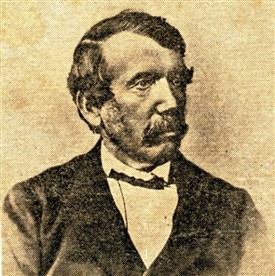Dr Livingstone, I presume?

David Livingstone
West Lothian Local History Library. All rights reserved.
The David Livingstone connection with Addiewell
David Livingstone, African traveller and missionary, was born at Blantyre in Lanarkshire in 1813. While at the Andersonian College in Glasgow (now Strathclyde University), he formed a lifelong friendship with James (Paraffin) Young.
Addiewell Oil Works
During his visits home to Scotland between African explorations, he came to the area as the guest of his great friend, James Young, who in the 1860s and 1870s was resident at Limefield House. In late July 1864, (or 9 August?) at Young’s invitation, Livingston laid the foundation stone of Addiewell Oil Works. Beneath the foundation stone was placed a time capsule with various items of interest. Does anybody know what became of it? Has it ever been found?
'The foreman mason on that day was the father of the late Willie Robb, who handed the trowel to David Livingstone when he laid the stone. To his dying day, Mr Robb spoke of the highlight in his career, and loved to talk of all the things that went under the stone - coins, papers, letters etc.'
How James Young helped
When Livingstone went missing in Africa and was out of contact for several years, it was Young who was the main funder of one of the attempts to trace him. Livingstone was eventually tracked down by the American journalist, Henry Stanley, who famously greeted the explorer, ‘Dr Livingstone, I presume?’
After Livingstone’s death, some of his servants carried his body for many weeks out of the interior to bring it home for burial in Britain. Young paid for this and ensured the Africans were reimbursed. Young also took financial and legal responsibility for Livingstone’s family after his death.
A quarter of all the letters written by David Livingstone were written to James Young.
Limefield House
At Limefield, a waterfall on the burn running through the grounds is said to have been built as a miniature Victoria Falls, in tribute to Livingstone, the first European to set eyes on them. Also in the grounds was a tree planted by Livingstone. The summer house at Limefield may also have had an African connection. The summer house was mounted on rails and could be turned to follow the sun. It was vandalised and disappeared in the 1990s. In the 2000s, it was found being used as a garden hut in Polbeth (?), and there was talk of restoring it and putting it back at Limefield.